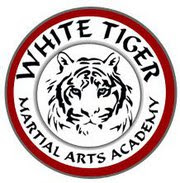Iceman
now holds the grade ofYondan Fourth Degree Black Beltwith the titlesRenshiandFull InstructorinShiro Tora Budo KaiWhite Tiger Martial ArtsAugust 2025
-------------------------
Tank
now holds the grade of
Sandan Third Degree Black Belt
with the titles
Sensei
and
Associate Instructor
in
Shiro Tora Budo Kai
White Tiger Martial Arts
August 2025
------------------------------
Joker
now holds the grade of
Nidan 2nd Degree Black Belt
with the title
Assistant Instructor
in
Shiro Tora Budo Kai
White Tiger Martial Arts
August 2025
--------------------
The "Traditional" Titles:
3rd dan Sensei
4th dan Renshi
5th dan Shidoshi
6th dan Shihan
7th dan Kyoshi
8th dan Hanshi
9th dan Soke
Sensei is the title awarded at 3rd dan meaning "teacher" or "instructor"
Shihan is the title awarded at 6th dan meaning "master" or "master instructor"
Renshi, Kyoshi and Hanshi are titles from traditional ryhua awarded at 4th, 6th and 8th dan respectively
they are hard to translate directly but are like Professor titles at a University
The "Modern" titles
4th Dan Renshi
Full Instructor
3rd Dan Sensei
Associate Instructor
2nd Dan
Assistant Instructor
1st Dan
Apprentice Instructor
BLACK BELT
Senior Student Sempai
-----------------------------
STMA Black Belts
The first three BB we had were Baloo, Chip and Tork
Ice was our fourth BB
Baloo and Chip were the first to get to 2nd Dan - Ice was the third
Ice is the first BB to reach 3rd Dan, and the only BB to reach 4th Dan
Tank is our fifth BB, and the fourth to reach 2nd Dan, and the second to reach 3rd Dan
So you can see how rare and significant these Dan grades are
Maverick, Viper and Cipher our sixth, seventh and eight BB, and are the BB who achieved 1st Dan
(Maverick was on the cusp of reaching 2nd Dan when he suddenly disappeared Trojan style)
Viper was our seventh BB, and the fifth BB to reach 2nd Dan
Rogue, Bane and Shamrock are our other three BB, our ninth, tenth and eleventh
Joker is our 12th BB, and 9th to reach Shodan, and now 6th to reach 2nd Dan
(Cyclops was on the cusp of being graded to BB before he left)
There are only 12 STMA Black Belts, 12 Tigers in 16 years
Baloo II
Chip II
Tork I
Iceman IIII
Tank III
Maverick I
Viper II
Cipher I
Rogue
Bane
Shamrock
Joker II
Nine went on to Shodan
Six of them went on to reach Nidan
Two have reached Sandan
Only one went on to Yondan
People tend to think that Black Belt and 1st Dan are the same thing but they are not
BB is the highest coloured belt, the title of Senior Student
one has to train as a BB for a year before consolidating their knowledge to receive the Shodan degree rank and title of Apprentice Instructor
this is signified by the first stripe on the black belt
